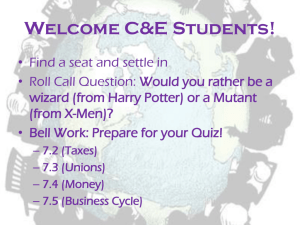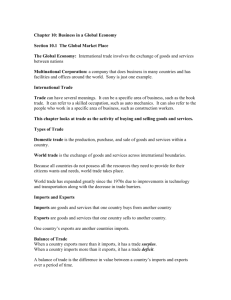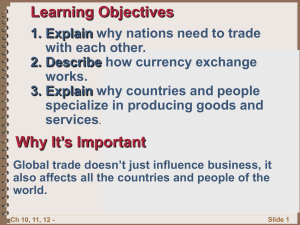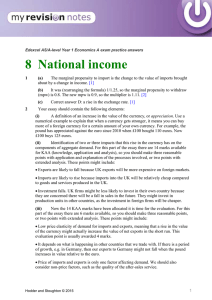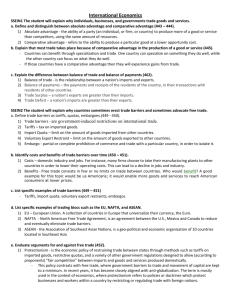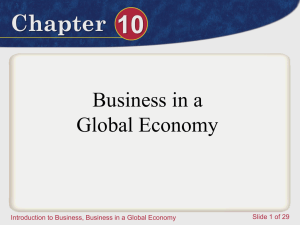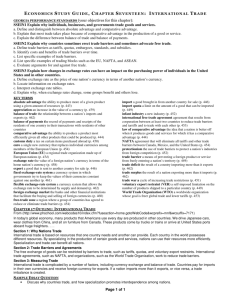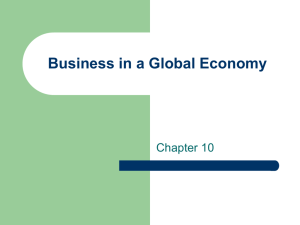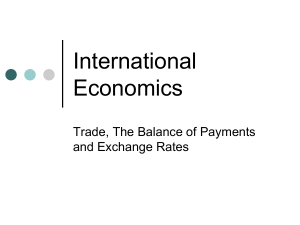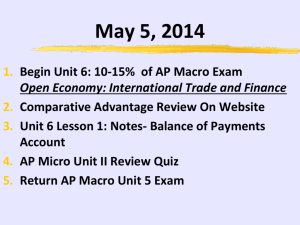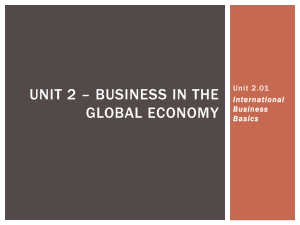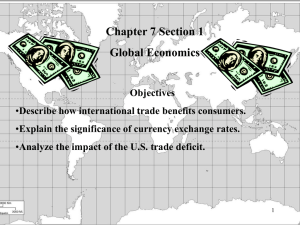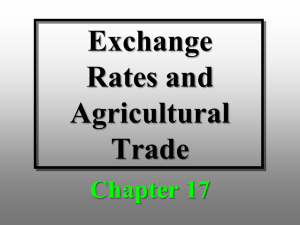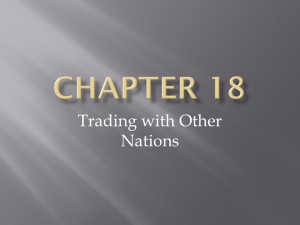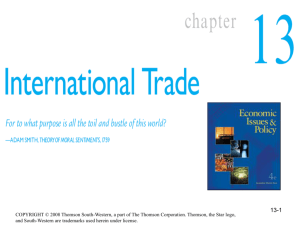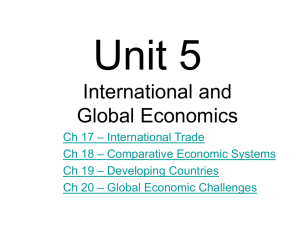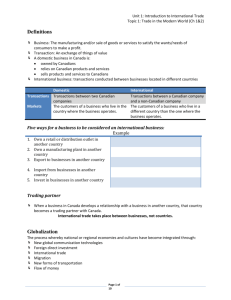Chapter 7
advertisement
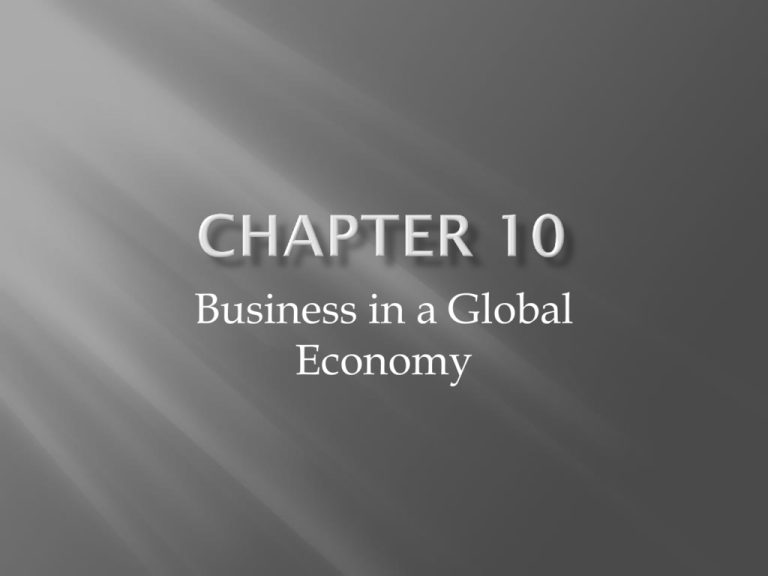
Business in a Global Economy Read: You may not know it but you’re a part of the global marketplace. You might buy clothes made in Taiwan. Turnover your alarm clock and you may see a sticker that reads, “Made in Indonesia”. In the future, you might work for a French company in the United States or for an American company in Paris. During the last 20 years, the US and other nations have greatly relied on one another’s goods and services to stay prosperous. Read: The global marketplace exists anywhere business crosses national borders. Most countries don’t produce everything their citizens want. A country might not have the necessary resources, it might not have the technology, or perhaps it’s not interested in making the product. However, countries can satisfy their citizens’ wants and needs by buying goods in the global market. A consumer, citizen, employee, and business leader of the twenty-first century must have an understanding of international trade and business in order to be an informed decision maker. Multinational corporation: company that does business in many countries and has facilities and offices in many countries around the world. Countries specialize in producing certain goods and services. By specializing, countries can sell what they produce best so they can buy the products they need from other countries. The resources available to a country often influence what it specializes in producing. Example: a country with little money or technology but a large population might specialize in manual labor. Trade: sale and exchange of goods and services between a buyer and a seller. Can be individuals or countries. Imports: goods and services that one country buys from another country. Exports: goods and services that a country sells to another country. Other types of trade include: Investment Exchange of human resources Tourism Military aid Loans Currency is another name for money. Just as countries use different languages, they use different currencies. Examples: Americans use dollars Mexicans use pesos Japanese use yen Foreign exchange market – made up of banks where different currencies are exchanged Different currencies have different values compared to each other. Exchange Rate: price at which one currency can buy another currency. Exchange rates change from day to day and from country to country. How much the currency of a country is worth depends on how many other countries want to buy its products. Favorable exchange rate: when the value of a country’s currency goes up compared to another country’s Unfavorable exchange rate: when the value of a country’s currency goes down compared to another country’s A country with a favorable exchange rate can buy more of the other country’s products. Balance of trade: difference in the value between how much a country imports and how much it exports. Trade surplus: when a country exports more than it imports Trade deficit: when a country imports more than it exports WTO is the only global international organization that deals with the rules of trade between nations. World Trade Organization 1. 2. 3. 4. Each student should find something they have with them that was made in another country. Place an x on the Smartboard map of where that item is from. Why did you purchase this item made in another country rather than one made in the United States? Do you agree or disagree with this statement: Americans depend too much on other countries. Students plan a vacation with stops in five countries. While on the trip, you will purchase five items in each country. Start by setting a reasonable estimate of the cost of each item. Next, search for an internet site that will provide the exchange rates for the countries you plan to visit. The Universal Currency Converter or World Currency Exchange can help. Calculate the cost of the items in the currency of each of the countries you plan to visit. Day 2 of Chapter 10 Global Competition Global competition often leads to trade disputes between countries. At the heart of most trade disputes is whether there should be limits on trade. There are two opposing points of view: free trade and protectionism. Protectionism: practice of putting limits on foreign trade to protect businesses at home. Most countries sell what they produce at home so they often want to keep out foreign competitors. To limit competition from other countries, governments put up trade barriers to keep foreign products out. 3 ways: Tariff: tax placed on imports to increase their price in the domestic market Quota: limit placed on the quantities of a product that can be imported. Embargo: when the government decides to stop an import or export of a product. Supporters of free trade believe there should be no limits on trade. To reduce limits on trade more countries are forming trade alliances with each other. Trade alliance: several countries merge their economies into one huge market. Examples: North American Free Trade Agreement (NAFTA) includes the United States, Canada, and Mexico European Union (EU) includes Austria, Belgium, Denmark, Finland, France, Germany, Great Britain, Greece, Ireland, Italy, Luxembourg, the Netherlands, Portugal, Spain, and Sweden Association of Southeast Asian Nations (ASEAN) includes Indonesia, Malaysia, Philippines, Singapore, Thailand, Brunei, Vietnam, Laos, Myanmar, and Cambodia. Imports_Exports Project



